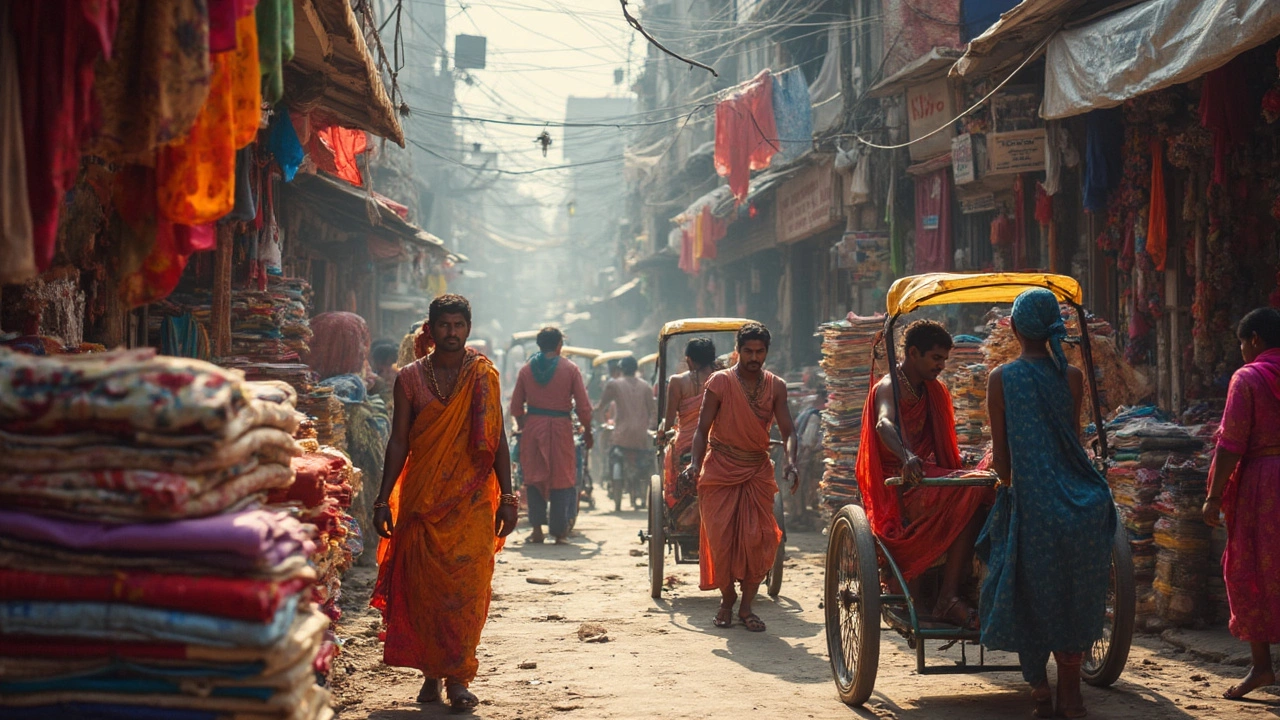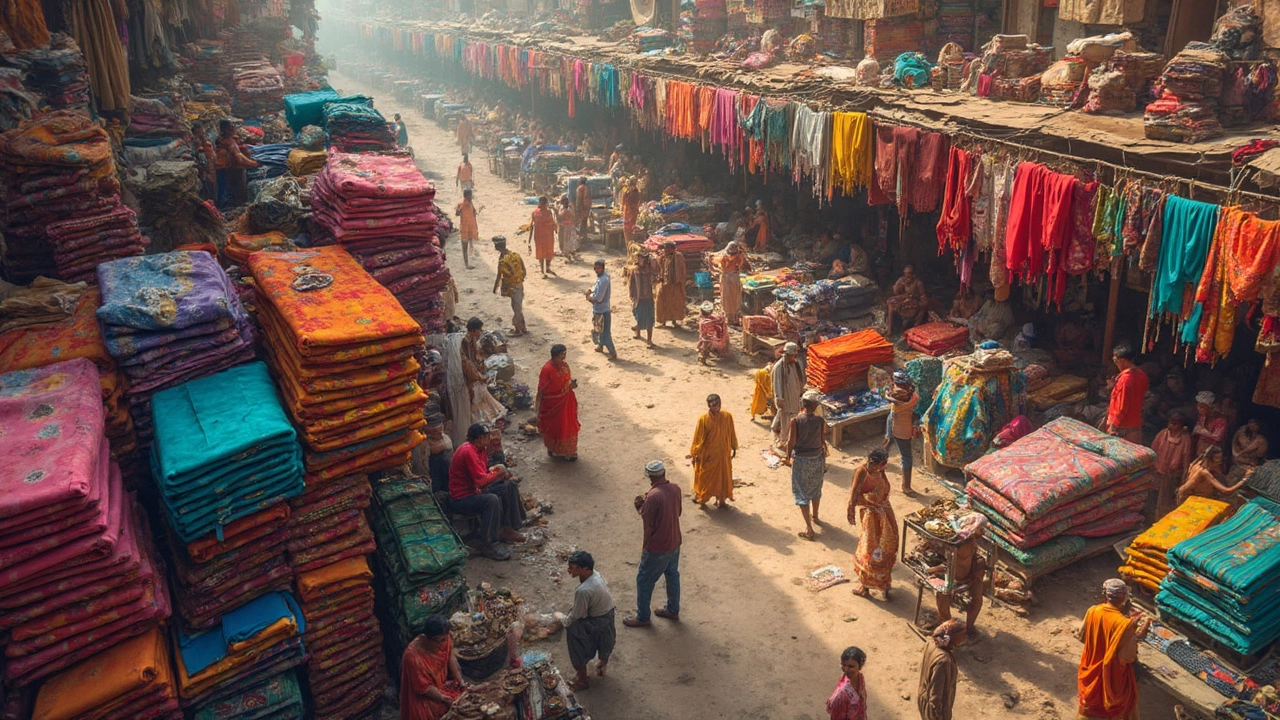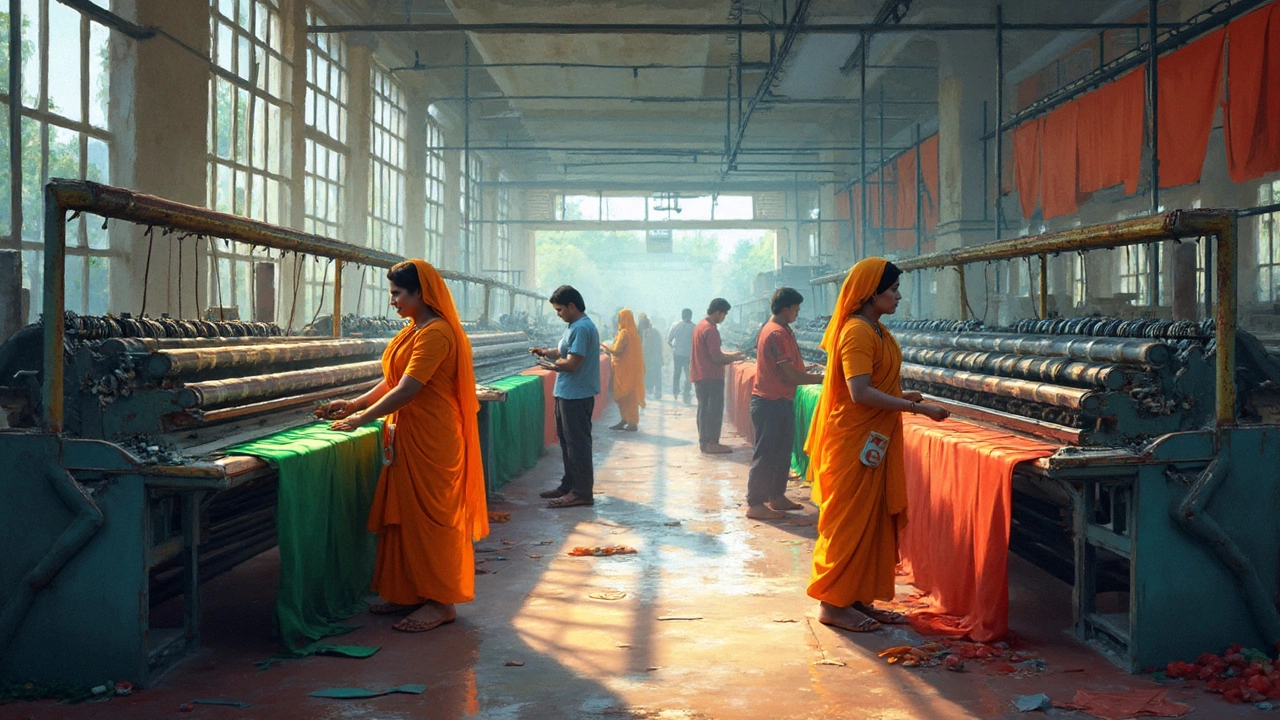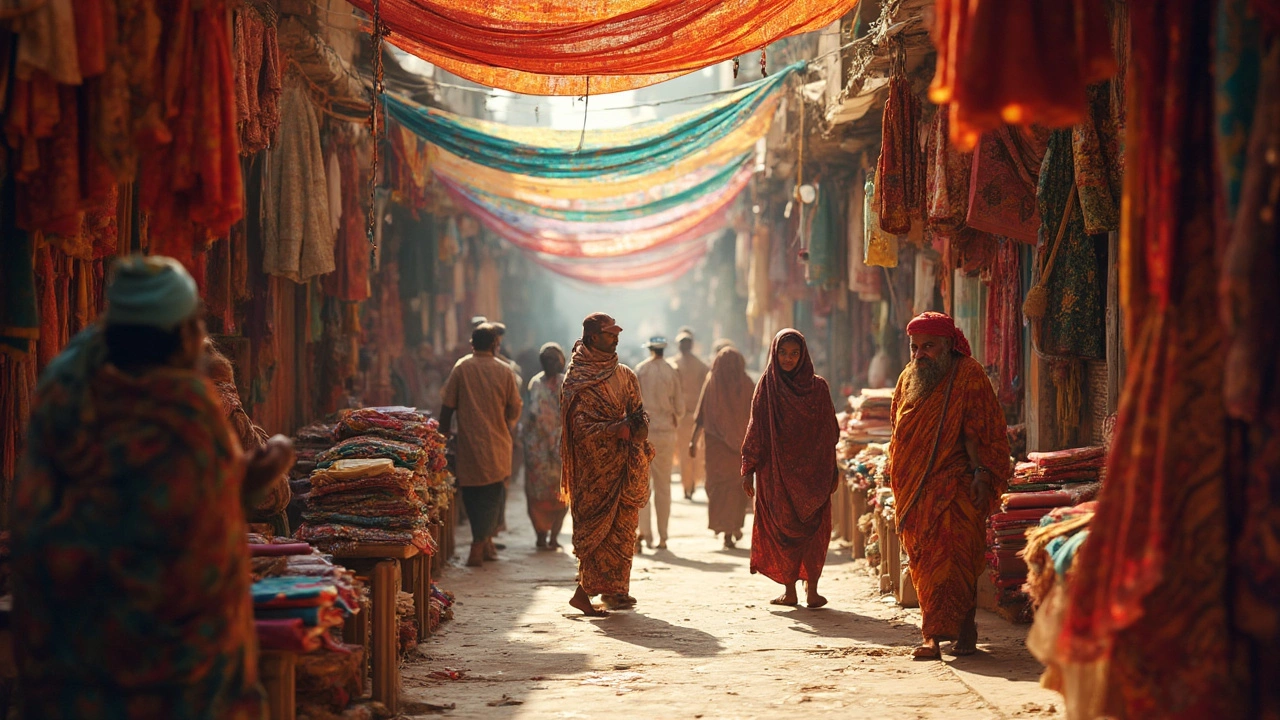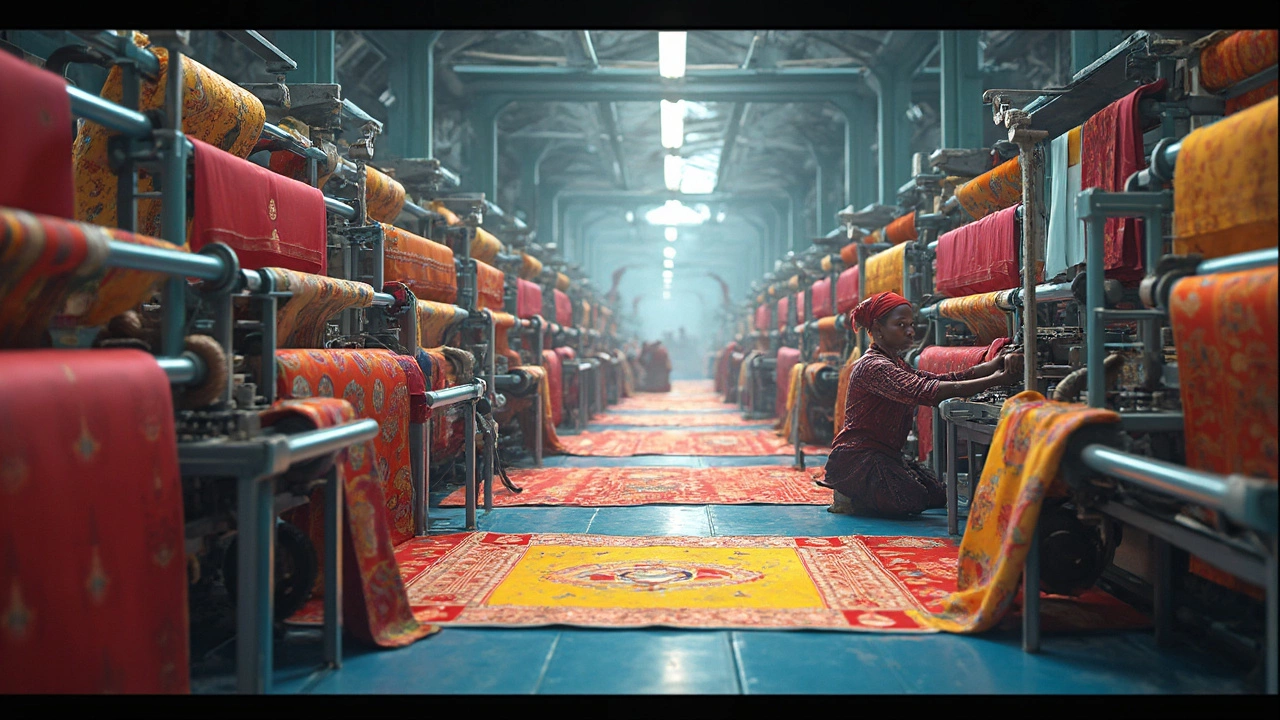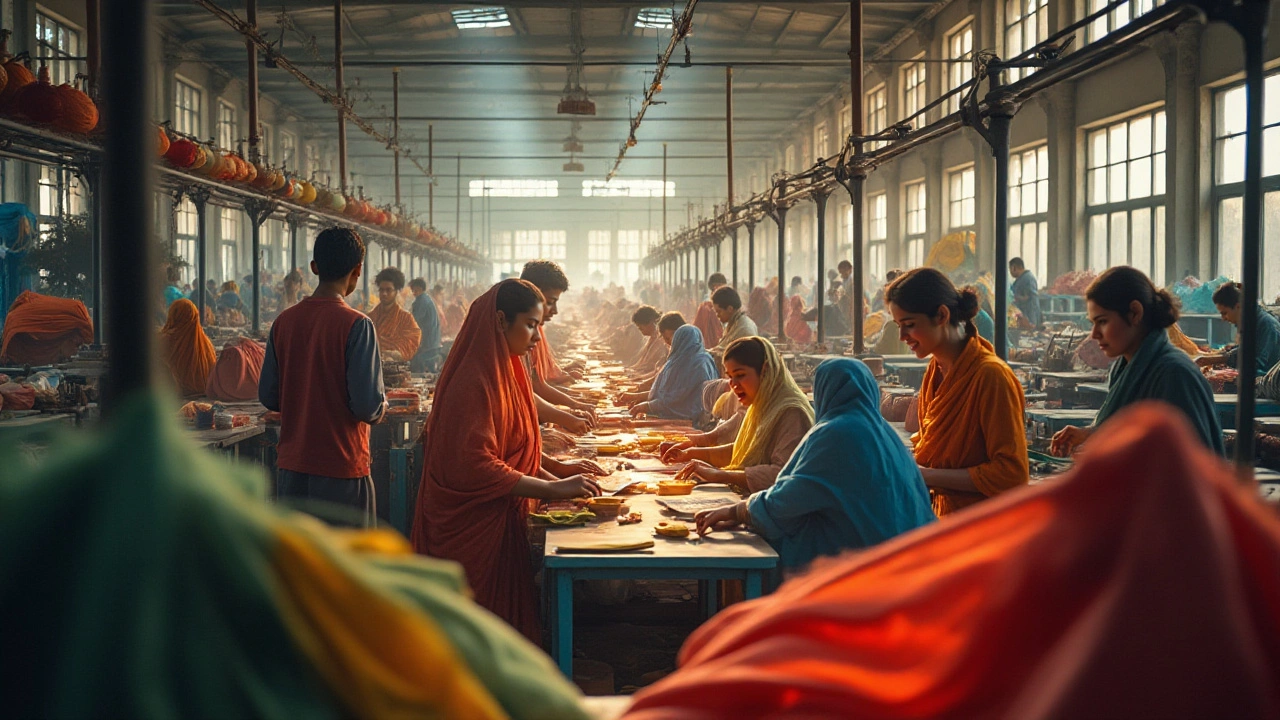- Where Are Dr Reddy's Drugs Manufactured? Inside India's Pharma Powerhouse Apr 20, 2025
- Why Is Chinese Steel Cheaper Than US Steel? May 12, 2025
- How to Start a Manufacturing Business from Zero: Step-by-Step Guide for Beginners Nov 17, 2025
- How to Enter Manufacturing: Practical Steps for 2025 Oct 14, 2025
- Easiest Manufacturing Businesses to Start: Real-Life Ideas That Work May 20, 2025
Textile Industry in India – Current Trends & How They Affect You
India’s textile industry is huge, employing millions and sending cloth all over the world. If you’re curious about what’s driving the market, what problems producers face, or where the next big opportunity lies, you’re in the right spot. Below we break down the most useful facts in plain language.
First off, the sector covers everything from cotton farms to high‑tech synthetic yarns. Cotton still dominates because it’s cheap and fits Indian climate, but silk, wool, and man‑made fibers are growing fast. This mix keeps the industry flexible and helps it adapt to global demand spikes.
Major Players and Export Hotspots
States like Gujarat, Maharashtra, and Tamil Nadu lead production thanks to good ports and skilled labor. Companies such as Arvind, Vardhman, and Welspun have built solid export networks, especially to the US, Europe, and the Middle East. Their success often hinges on modern machines, strict quality checks, and the ability to meet fast fashion timelines.
Export numbers have risen steadily; in 2023 India shipped over $40 billion worth of textiles. That surge reflects not only volume but also a shift toward higher‑value items like designer silk and technical fabrics for sportswear. If you’re looking to source cloth, those states and firms are worth a closer look.
What’s Next for Sustainable Textiles?
Consumers everywhere are asking for greener products, and Indian makers are responding. Organic cotton, recycled polyester, and low‑water dyeing processes are gaining traction. The government’s “Make in India” push includes incentives for eco‑friendly technology, which means more factories may upgrade to cleaner systems in the next few years.
One practical tip: when buying fabrics, check for certifications like GOTS (Global Organic Textile Standard) or Oeko‑Tex. Those labels give you confidence that the cloth was produced with fewer chemicals and better labor practices.
Another trend is digital printing, which reduces water use and waste compared to traditional methods. Small designers are already using this tech to create limited‑run, high‑quality patterns without huge inventories.
Overall, the Indian textile industry is at a crossroads. It has the scale to meet massive demand, but it also needs to modernize and go green to stay competitive. By watching which states invest in new tech, which brands adopt sustainable practices, and how export markets shift, you can make smarter decisions—whether you’re a buyer, a manufacturer, or just a curious reader.
So, keep an eye on the mix of cotton simplicity and high‑tech innovation, watch the sustainability moves, and you’ll get a clear picture of where the Indian textile world is heading next.
Textile Capital of India: Where the Fabric Magic Happens
- Aarav Sekhar
- May 27, 2025
Trying to find the main hub of the Indian textile world? This article digs into which city owns the title of 'textile capital of India' and why. You'll discover how it gained this fame, what makes its textiles stand out, and what the actual working life looks like there. We’ll also show you where the real manufacturing action happens and give you tips if you’re looking to connect with suppliers or start your own textile journey. Concrete info, no fluff—just what you need to know about India’s textile powerhouse.
Largest Textile City in India: Why Surat Tops the List
- Aarav Sekhar
- May 4, 2025
Curious about where India’s textile magic happens? This article digs into the unmatched scale and buzz of Surat—the country’s biggest textile city. Discover why Surat has become the go-to hub for manufacturers, exporters, and buyers alike. Learn how technology, innovation, and community power up this industry. Get some practical tips if you want to source fabric or launch a textile business in Surat.
Who is the King of Textiles?
- Aarav Sekhar
- Apr 16, 2025
Uncover the dynamic world of India's textile industry, where historical roots meet modern innovation. Explore major players shaping the sector and discover why India holds a pivotal role in global textile production. With insights into the balance between tradition and technology, this article offers a detailed look at the factors that place these manufacturers in a league of their own.
Exploring India's Textile Hub: Unveiling the World Capital
- Aarav Sekhar
- Mar 26, 2025
Discover why India is often hailed as the textile capital of the world. This exploration dives into the historical significance, modern advancements, and economic impact of India's flourishing textile industry. With insights on major manufacturing hubs like Surat and Tiruppur, the piece also highlights challenges and forward-looking trends in sustainable practices. Whether you're an industry insider or a curious reader, this article sheds light on India's vital role in the global textile landscape.
Textile Industry Outlook in India for 2024: Key Trends and Insights
- Aarav Sekhar
- Feb 12, 2025
The textile industry in India is gearing up for significant changes in 2024, driven by technological advances and sustainable practices. With both challenges and opportunities on the horizon, manufacturers are investing in innovation to boost productivity. While global demand fluctuations pose uncertainty, India's strong domestic market offers a buffer. Government initiatives continue to play a vital role in supporting industry growth.
Top Textile Manufacturing Giants: Spotlight on Global Leaders in 2025
- Aarav Sekhar
- Jan 28, 2025
The textile industry plays a significant role in the global economy. As of 2025, certain countries have positioned themselves as leaders in textile manufacturing. This article explores the current leading countries in the textile sector, drawing attention to their production capacities and competitive advantages. Readers will gain insights into the factors driving these countries' success and what to expect in the industry's future.
